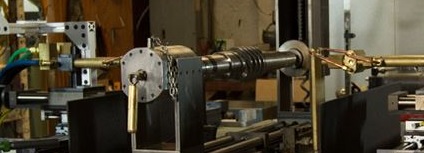Tips for Getting Quality Outsourced Flame Hardening Solution

Last week we covered the highlights of designing an inhouse flame hardening solution; this week we’ll talk in more detail about the other choice – outsourcing.
The most compelling reason clients have to outsource heat treating solutions is to avoid the large capital outlay required for an inhouse solution. To have a good ROI you need a high enough volume of parts going through the machine to justify the cost. When volumes are low, clients are wise to investigate their outsourcing options.
But beware – hidden costs can run up your bill for outsourcing. As mentioned before in an earlier blog, when you’re talking steel and a large mass, you’re talking a lot of material handling and shipping costs – unless you’re lucky enough to have a local flame hardener that picks up and drops off for you. Pittsburgh, Chicago, and Cleveland all have excellent heat treat shops that take care of the material handling for their customers. But if you have to use a freight handler to ship your parts to another state, you are looking at substantial labor and shipping costs to pack parts up and get them returned – without damage, getting lost, or the other risks you run with freight. The actual per part cost of the heat treatment will be attractive, but make sure you factor in these other ancillary costs to get a total picture.
Once you establish a workable cost, you still have to navigate delivery and quality. How will you know if your heat treat supplier is able to meet your heat treat specs? You pretty much have three choices:
- Believe them when they say, “Trust me.”
- Set up the methods to test parts yourself inhouse to make sure they’re good, including occasional destructive testing for hardness depth.
- Get the specs and process from the heat treat supplier. What equipment do they use? Is it calibrated regularly? Are they measuring the fuel/oxygen flow, heat and quench time – is the equipment measuring these things so that you know the operator is following the same process for every part, and it meets spec?
As we’ve discussed under the blogs dealing with possible problems resulting from using any type of heat, but particularly flame, you need to negotiate some way to assure the hardness levels, depth and patterns are what you need in the field.
Lastly, how long will it take before your hardened parts are back in your shop? Include the estimated shipping times as well as the length of time at the supplier. And, since the availability of your parts can impact YOUR own delivery of product, the heat treat supplier needs to understand and abide by your delivery requirements or make accommodations in your contract.
At FTSI we are both a resource for flame hardening and a resource for designing and building flame hardening equipment. We find that being able to offer both solutions to clients enables them to test their concepts and costs without taking on an uncomfortable amount of risk. Once clients are comfortable seeing the process work for their application, then they may decide to continue with outsourcing or ask us to build exactly the same configuration for them to continue the work in their own shop. We want to make sure that the process yields consistent, quality results so that the client can then concentrate on designing and implementing the production solution that makes the most sense for their business model. Helping clients work all this out to their satisfaction – even their elation – is what keeps us showing up for work every day.
We would love to talk to you about your inhouse flame hardening solution or your outsource needs if you are looking into flame hardening solution for your parts. Email me at mark@flametreatingsystems.com or call 919-956-5208 and let’s get started!
B15: We would like to know your opinion.






